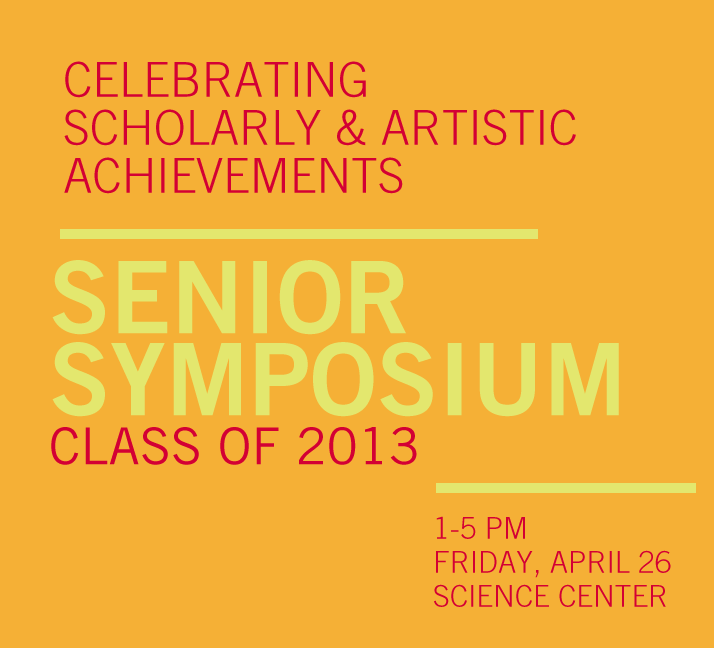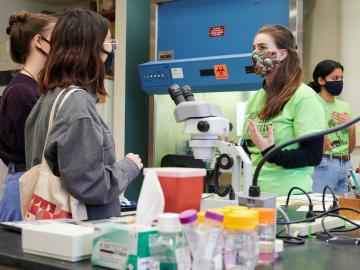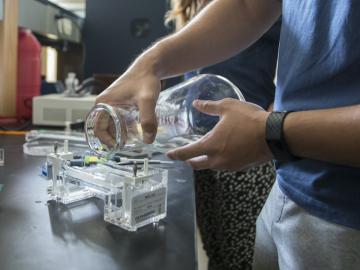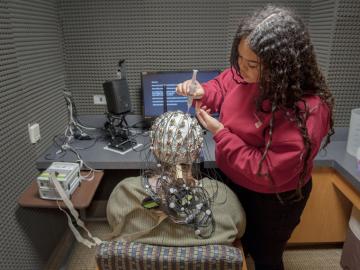Campus News
Erosion in the Vermilion River Watershed
April 25, 2013
Liv Combe

All members of the campus and community are invited to take part in Oberlin’s annual celebration of the academic and artistic accomplishments of members of the graduating class. The 2013 Senior Symposium is set for Friday, April 26, from 1 to 5 p.m. in the Science Center.
Oberlin OnCampus is offering a series of sneak peeks of the presentations that will be made during the symposium. Today’s pick:
Using Short-Lived Radionuclides to Explore the Effects of Agricultural Drainage Tiles on Erosion Depth in the Vermilion River Watershed
A double degree student in organ performance and geology, Jennifer Bower’s project explores the relationship between agricultural land use, drainage tiles, and depth of erosion in the nearby Vermilion River watershed. Hailing from St. Louis, Bower has traveled the world to play historical organs and been the president of the Organ Pump Committee for the past three years. Last fall, she presented a poster at the Geology Society of America meeting in North Carolina.
Bower will make her presentation during the symposium’s second session (2:45 to 3:45 p.m.), “On the Down Low: Studies of Groundwater and Gypsum,” moderated by Professor of Geology Bruce Simonson. Download the full 2013 Senior Symposium Schedule.
Doing What Academics and Artists Do
This year, 50 students will present their independent and collaborative work to the Oberlin community. Topics range from the reproductive rights movement at Oberlin in the 1960s to groundwater storage in China and Tibet; the effect of heavy metal ions in Huntington’s Disease to themes of obsessions and incest in Gabriel García Márquez’s One Hundred Years of Solitude. Participating student majors and concentrations run the gamut from archaeology and geology to ethnomusicology and gender, sexuality, and feminist studies.
Opening remarks by Associate Dean of the College Arts and Sciences Joyce Babyak will take place at 1 p.m., with panels beginning at 1:30, 2:45, and 4 p.m. The symposium is divided into three section, each section consisting of five to six panels. The panels feature three students offering 12-minute presentations, with 15 minutes reserved at the end of each panel for questions. The reception for the event will begin at 5 p.m. in the academic commons of the Science Center.
Babyak sees the senior symposium as an opportunity for graduating students to share their work with their peers, the faculty, and staff who have supported their educations aspirations, and the broader Oberlin community.
“It is a culminating experience in which students do just what academics and artists do: present their work, whether in the form of a research presentation or a creative performance or show, and engage in open conversation about that work,” says Babyak.
Tags:
You may also like…
Students Explore Oberlin’s Range of Research in This Year’s Lab Crawl
November 17, 2021
Lab Crawl was well attended this semester with many students making stops at demonstrations held in one or more of 22 labs across campus.
This Week in Photos: Alzheimer's Research
August 5, 2021
A picture of a student transferring an opaque substance into a gel box in a neuroscience lab serves as inspiration for this week’s photo series.
Undergraduate Research Symposium Showcases Student Research Virtually
April 24, 2020
All are invited to the online symposium that features research from Oberlin College and Conservatory of Music students.


